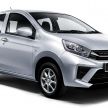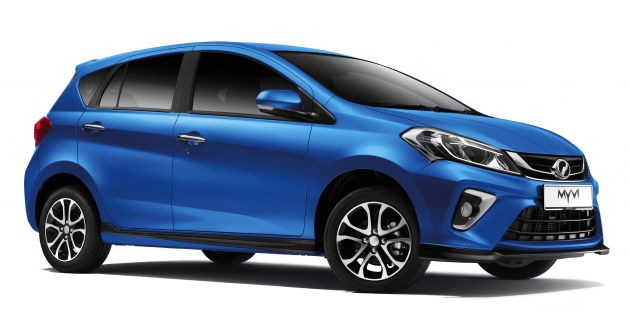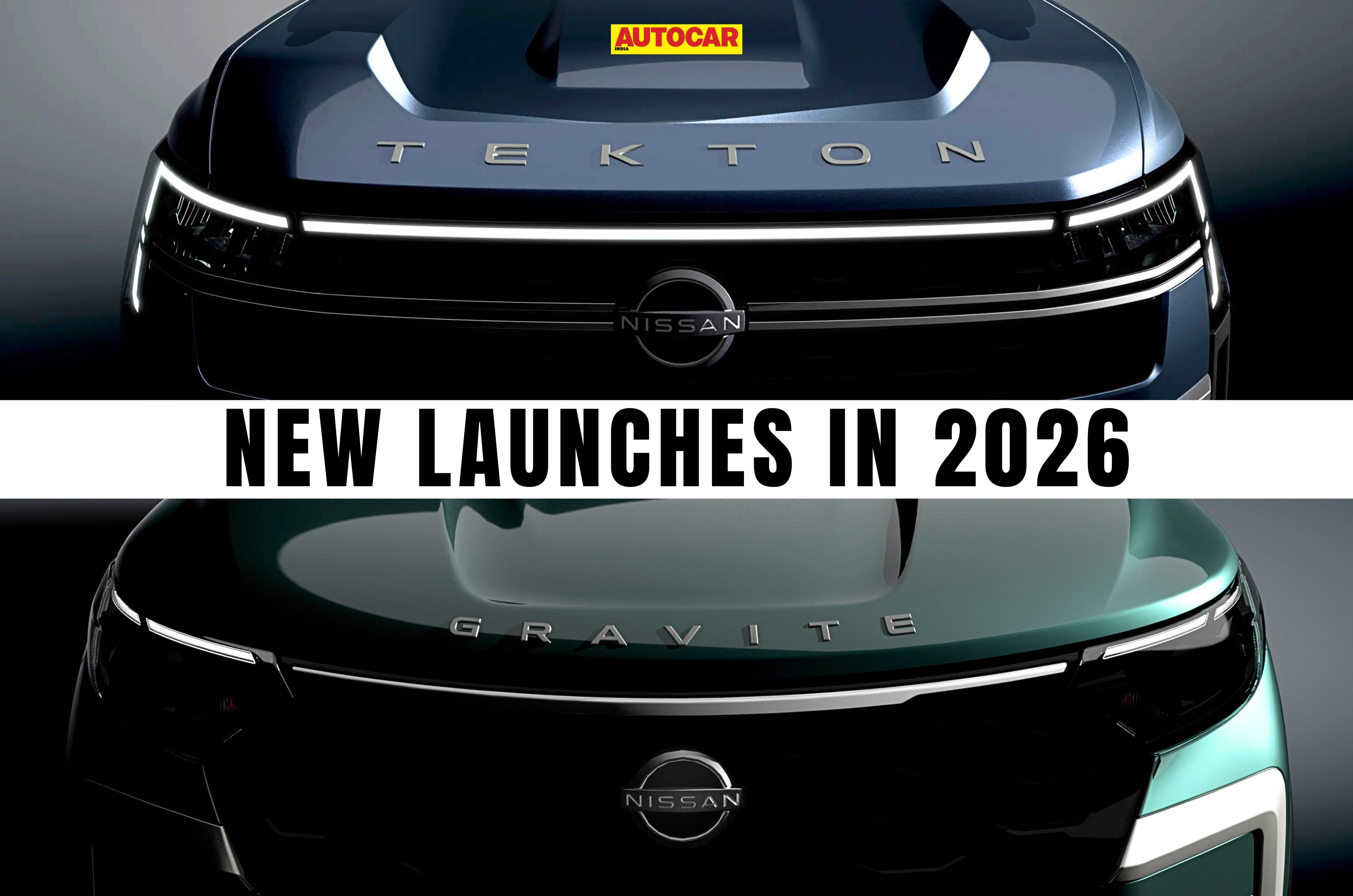5 Perodua variants you should not buy – here’s why




Now, we know what some of you are thinking, but really, this post is not what you think it is. Despite how the headline reads, this isn’t meant to be one of those clickbait posts purposely going the other direction to get noticed.
Instead, these are five Perodua models that we think you should skip, because there are other models in the market leader’s range that you should instead focus your hard earned money on. Our buyers guide is based on price and features, with a strong emphasis on safety kit.
In an ideal world, we’ll get all safety equipment across every model range on sale, including the cheapest car in Malaysia – the Axia. But as with everything in life, it doesn’t work that way, and something has to give. There’s this Cantonese line that says there’s no such thing as pheang, leang, cheang which translates to “cheap, nice and good”. You’ll do very well to get 2/3, mate.
Speaking of safety, Perodua has of late been the carmaker pushing the safety glass ceiling. That’s a good thing for any marque, but as the both the market leader and the one selling the most affordable cars in the country, this push brings a higher level of car safety to the masses, and also pressures others to follow suit. If an Axia can have AEB, surely a European premium exec priced north of RM200k must include the feature, no?
The current generation Myvi introduced Advanced Safety Assist (ASA) in 2017, and the safety pack – which includes Pre-Collision Warning, Pre-Collision Braking, Front Departure Alert and Pedal Misoperation Control – is now in 2.0 form, with upgraded parameters (PCW and PCB now work up to 100 km/h and 80 km/h respectively, was 30 km/h) and pedestrian detection (up to 50 km/h).
Today, every Perodua except for the very old Alza (more on this later) can be had with ASA 2.0 and Vehicle Stability Control (VSC). This is unprecedented for budget cars in our region, and Perodua doesn’t get enough credit for it, IMHO. Safety aside, we’ve also been getting the latest kit (LED headlamps, keyless entry) and some very practical homegrown features (handbag hook, air con memory, integrated SmartTag, among others).
But with so many variants, some are better than others. Here are five Perodua variants that we think you should skip in favour of other models.
Perodua Axia E


Well, this is an easy one. Most would skip the “driving school spec” Axia anyway, as it’s a “kosong car” meant for those looking for the cheapest new car in the market, and driving schools.
It’s simply amazing that the entry-level Perodua of 2020 is still priced at below RM25k (RM23,367 with the 2020 sales tax exemption, normal price RM24,090), just like the Kancil back in 1994. We’ve done a separate story on the stubborn base price and evolution of Malaysia’s cheapest car – read it here.
To be this cheap, the Axia E rolls on steel wheels, and doesn’t come with a radio and speakers (the bumpers are painted though!). While those things can be fitted at the accessories shop, your neighbourhood Brother’s won’t be able to rectify the lack of ABS with EBD, which is essential safety kit.
Perodua Axia G


Next up in our list, and Perodua’s price list, is the Axia G. The real base model for most carbuyers, the G adds on a four-speed automatic gearbox (the E is manual-only), alloys, body-coloured and powered side mirrors, a rear wiper, trip computer, remote key/alarm and a 2-DIN head unit.
Those are all nice to have, but crucially, the RM32,485 (with 2020 sales tax exemption) variant adds on ABS with EBD. Now shouldn’t it be the ideal cheap car that cancels out our beef with the E?
Yes, but the 2019 Axia facelift range introduced a new variant called the Axia GXtra. For RM1,500 more, you get some brightwork in and out, some good-to-have convenience features, rear parking sensors and VSC. The latter made its debut in the 2019 Axia facelift, and the safety feature is available from the GXtra onwards. It’s the cheapest car in the country to come with VSC, and is a no-brainer for the RM1,500 premium over the G.
If you can afford it. Now, the difference of RM1,500 spread out over a seven-year loan is RM19 a month, and for some, that’s lunch money. But at this end of the car market, getting your car loan approved is not a given, and yes or no is down to very fine margins. Perodua knows its segment and customers the best, and the G exists for a reason. But if you can afford it, go for the GXtra.
Perodua Bezza 1.0 G
We come to the Bezza, the Axia’s sedan sibling and the most popular model with ride-hailing drivers. The Bezza was facelifted earlier this year, and prices start from RM35,391 for the 1.0 G AT (SST exemption included; there’s also a 1.0 MT for RM33,456 but we’ll compare AT to AT). The cheapest 1.3L is the X AT at RM42,551.
Now, RM7k is a fair bit of premium at this price point, but unlike the Axia’s different specs, there’s more here than just extra equipment. You do get a lot more with the Bezza 1.3L, and the advantage over the 1.0L will be apparent in every drive.
The extra grunt (27 hp/30 Nm on paper) is useful – more so for ride-hailing cars with a full load – but there’s significant difference in refinement between the two engines, and the car with the extra cylinder is a much more pleasant steer.
That RM7k also nets the 1.3 X buyer front parking sensors, front foglamps, 15-inch alloys, hill start assist and crucially, VSC. Once again, if you can stomach the difference in monthly instalments (RM97 for a seven-year loan), the 1.3L Bezza feels less of a chore and its advantage is clear.
If you don’t mind having three cylinders (there’s a satisfaction in paying RM20 road tax), and you don’t need a big boot, the above-mentioned Axia GXtra (RM33,940) offers VSC for slightly less than the Bezza 1.0 G AT. Conversely, the Axia Style and SE (both RM37,515) are slightly north in the ballpark – both have VSC, more toys and the SUV-inspired Style looks rather funky.
Perodua Myvi 1.5 H
Perodua recently gave the Myvi a minor refresh for 2020, introducing a new Electric Blue colour and the latest ASA 2.0 on half of the range (ASA was previously exclusive to the AV). With the refresh came a slight revision in prices.
The 1.5 H now goes for RM50,530, RM2k higher than before. That brings it much closer to the range-topping 1.5 AV, which is priced at RM52,697 (RM500 higher). The price difference between the High and Advance used to be slightly over RM3,600; now it’s just over RM2k.
The 1.5 H price bump is because it now gets ASA as standard. With that equalised, the price difference between the H and AV is essentially for the top spec car’s window tint (you’ll need it from the aftermarket anyway), leather seats and touchscreen head unit with reverse camera. All that for a touch over RM2k means it’s worth going for the costliest Myvi. Unless you don’t like leather seats.
By the way, Myvi 1.3 X buyers can now choose to have ASA 2.0 for RM2k extra, and if you can afford it, why not, because autonomous emergency braking (AEB, P2 calls it Pre-Collision Braking) can potentially save you money by preventing fender benders, if not for anything else. Kudos to P2 for providing 1.3L buyers the option for ASA when they could have just pointed people to the 1.5L.
Perodua Alza AV
The Perodua Alza is seriously long in the tooth. In two months time, Perodua’s MPV will celebrate its 11th birthday, having reached our shores back in November 2009 as the Malaysian version of the JDM Toyota Passo Sette/Daihatsu Boon Luminas. In that decade, it has received two facelifts, in 2014 and 2018.
But simply being old does not mean that the Alza has no place in our market; a proven and affordable three-row people carrier is a necessity, and beyond those practical reasons, the Alza has its fans thanks to its Japanese origins. Priced from RM50k (S MT) to RM55k (SE AT), it offers more room than a similarly priced Myvi, which makes it a value proposition for some.
However, the Alza Advance goes for RM60,525, which puts it just a few thousand ringgit below the Aruz 1.5 X at RM68,526. Between these two, the entry-level Aruz has more space, the latest NR Dual VVT-i engine, in-trend SUV-inspired design, modern equipment (LED headlamps, keyless entry/push start, integrated SmartTag) and better safety.
Safety is doubly important as MPVs are family cars – while the Alza gets just two airbags and ABS, the Aruz is a five-star ASEAN NCAP car with six airbags and VSC. The Aruz AV adds on ASA 2.0.
The difference in monthly instalments between the top Alza and base Aruz is RM90. There’s usually some overlap in features between the top and base of different models, but the gulf is way too big in this case and we can only recommend the Aruz 1.5 X.
So there you go, five Perodua variants that you should not buy, and why. Of course, all variants exist for a reason, and at this price segment, every 10 ringgit counts when it comes to affordability and loan approval. But if you can afford the difference, go for the better and/or better value car. There are some features that once used can never be “unused”, and while safety features can’t be seen, they make all the difference in the most crucial of moments.
The post 5 Perodua variants you should <em>not</em> buy – here’s why appeared first on Paul Tan's Automotive News.
from Paul Tan's Automotive News
Read The Rest:paultan...






Post a Comment